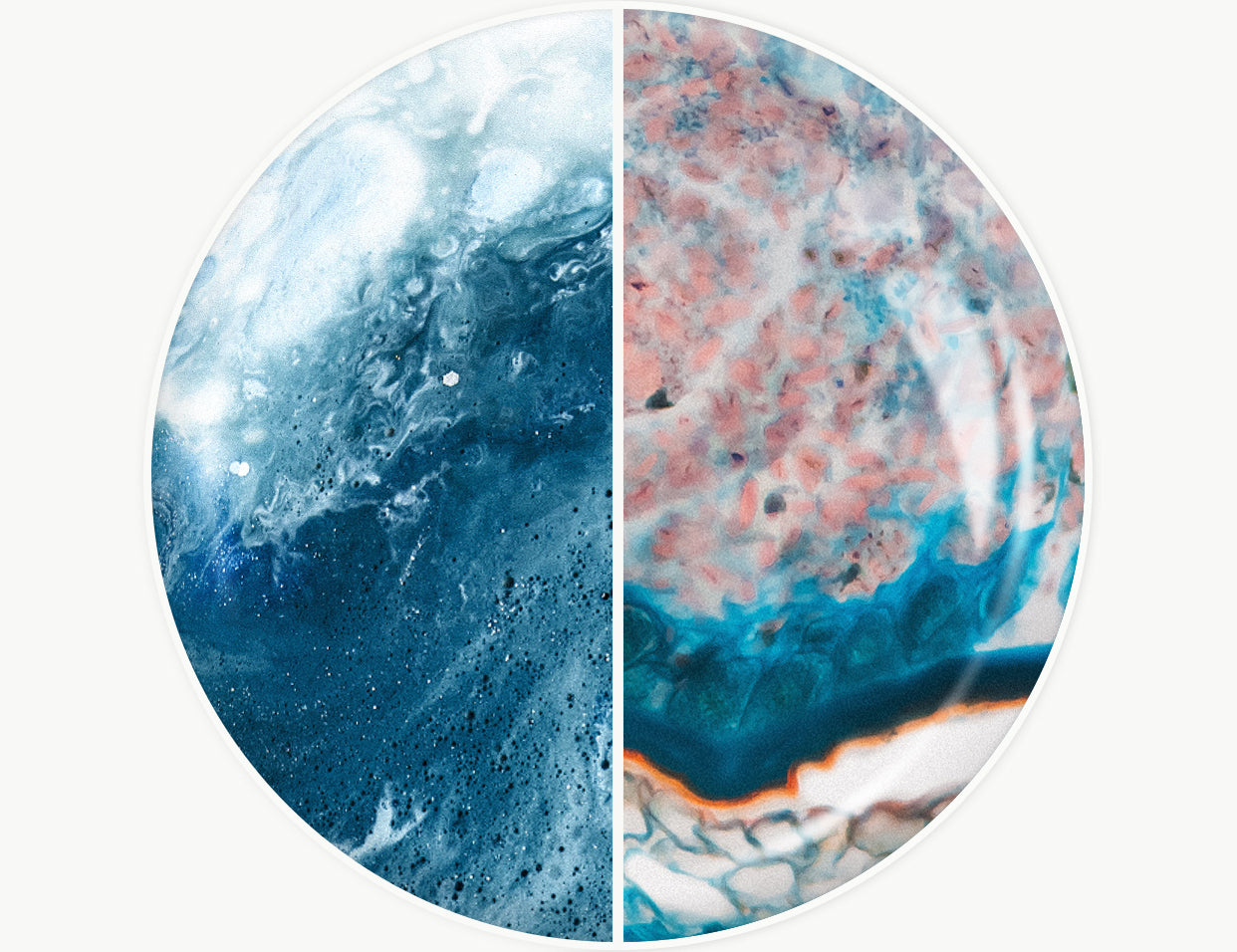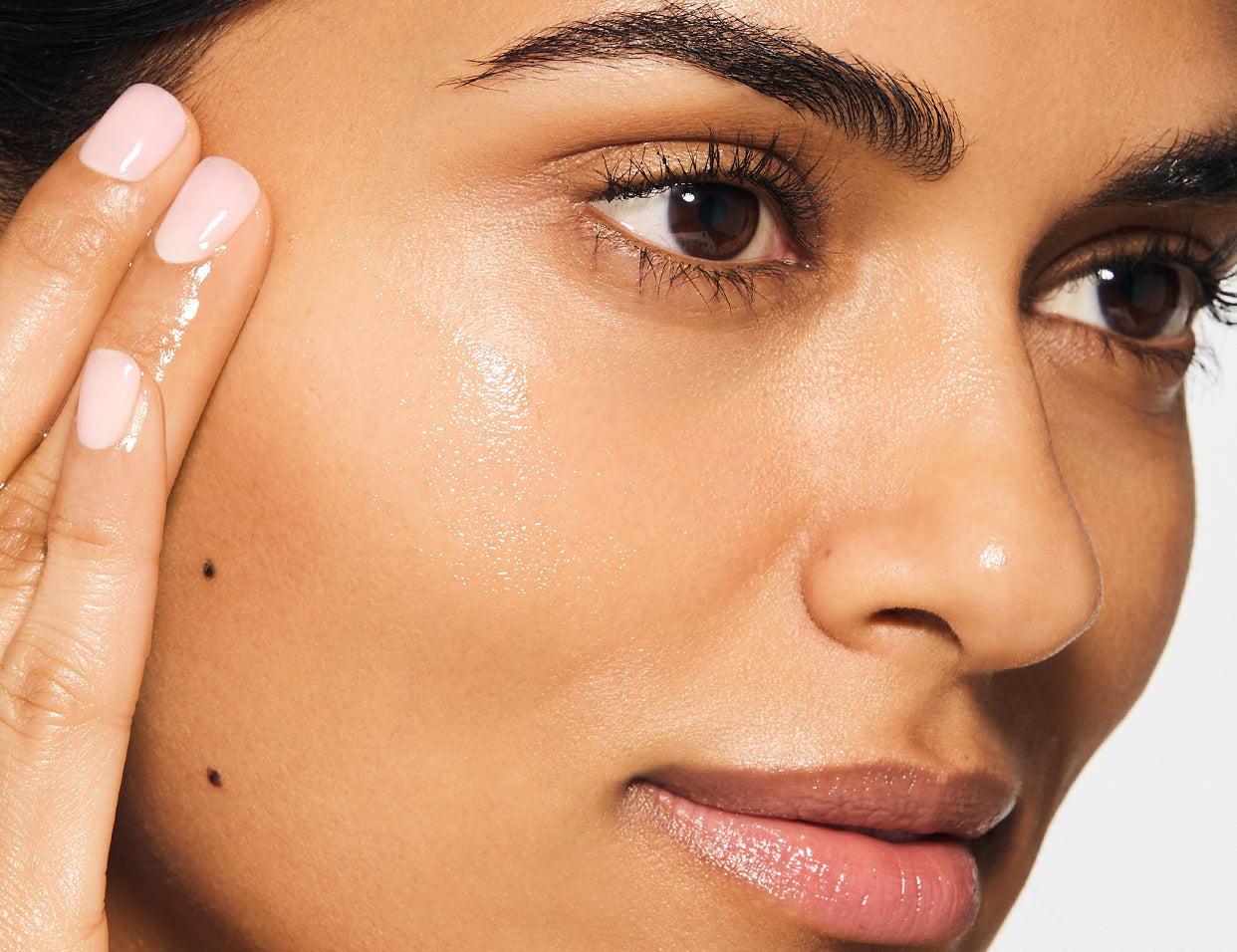What Is Glycolic Acid?
Glycolic acid is an alpha-hydroxy acid (AHA), typically derived from fruits and water-soluble, that promotes the shedding of dead skin cells, also known as desquamation, by loosening the bonds between them. This accelerates topical exfoliation, improving the visual signs of photo-aging, fine lines, dark spots, and congested skin.
Among AHAs, glycolic acid is the smallest molecule, allowing it to soak into the skin more efficiently and perform faster. Glycolic acid is also known to induce some inflammation or erythema if not used properly, which is why it is recommended to start with a lower percentage and work your tolerance level up. In clinical settings, higher concentrations of glycolic acid have also been shown to promote collagen synthesis and increase epidermal and dermal hyaluronic acid levels.
What Type Of Skin Is Glycolic Acid Best For?
Glycolic acid can be used on all skin types depending on the concentration but it is especially beneficial for dull, photoaged skin. It can brighten the skin, reducing topical skin discoloration while also addressing fine lines and wrinkles. Unlike salicylic acid which can also even skin tone and texture, glycolic acid does not reduce sebum production so it can be used by those with dry skin.
It’s also important to be aware of a product’s pH because glycolic acid’s efficacy hinges on the pH of the product. Glycolic acid’s pKa is around 3.83 so at a pH of 3.83, half of the concentration of glycolic acid is in the nonionic “active” form while the other half is charged which is not favorable for skin penetration and therefore less efficacious. The goal is to have an acidic product with a pH low enough to favor glycolic acid soaking into the skin but not so low that it induces inflammation, irritation, and erythema. If you have sensitive skin, it is recommended to start at a lower dosage or use glycolic acid in a rinse off formula for shorter contact time. However, if your skin can tolerate it, a higher percentage (between 5-15%) can be great for reducing the appearance of uneven skin texture, fine lines, and wrinkles. Using a milky toner, cream, or moisturizer with glycolic acid can help buffer and offset potential irritation as opposed to using a solution or clear toner containing glycolic acid.
Do not forget: you must wear sunscreen when using an AHA! You don’t want to undo all the benefits due to the negative effects of sun exposure.
What Is Vitamin C?
Vitamin C, also known as ascorbic acid, is a vital nutrient with significant benefits for the skin when applied topically. As a powerful antioxidant, vitamin C helps neutralize free radicals, thereby reducing oxidative stress caused by external factors such as UV radiation, pollution, and smoking, which can lead to photoaging—evident in wrinkles, skin damage, and loss of elasticity. Furthermore, vitamin C plays a crucial role in the synthesis of collagen, a structural protein essential for maintaining skin firmness and elasticity, thus supporting overall skin health. Its unique properties also contribute to skin regeneration and repair, making it an excellent ingredient for enhancing the skin's overall appearance and resilience.
Vitamin C is also available in various derivative forms that offer enhanced stability and solubility in either water or oil. Most derivatives are also gentler on the skin. These derivatives convert into the active form of vitamin C, ascorbic acid, upon application, thereby delivering the benefits associated with vitamin C. However, it is important to note that vitamin C derivatives have not been as extensively studied as ascorbic acid itself.
What Type Of Skin Is Vitamin C Best For?
Vitamin C is a versatile ingredient that can be used on most skin types, depending on the product's concentration and Vitamin C form. It is particularly effective for brightening dull skin and reducing topical discoloration over time. The ideal percentage of ascorbic acid is typically between 8% and 20%. At higher percentages, it’s important to slowly introduce into your skincare routine to determine any sensitivities and build to a daily application as needed. Prequel's Lucent-C Brightening Vitamin C Serum contains 15% ascorbic acid, making it an effective choice for most skin types.
Between Glycolic Acid and Vitamin C, Which Is Better for Brightening?
Vitamin C and glycolic acid are both effective skin brighteners, but they work differently. Glycolic acid, an alpha hydroxy acid (AHA), exfoliates the skin, removing dead cells and revealing a brighter complexion. Vitamin C, with its strong antioxidant properties helps neutralize free radicals and stimulate collagen production, thus leading to a more even skin tone.
For optimal results, you can combine vitamin C and glycolic acid. However, start with lower concentrations and gradually increase them, especially if you have sensitive skin. Always wear sunscreen when using these ingredients, as they can make your skin more susceptible to sun damage.
Do Both Glycolic Acid and Vitamin C Help with Hyperpigmentation?
It’s important to first understand the definition of hyperpigmentation. Hyperpigmentation is a common condition in which patches of skin are darker than the surrounding skin. It occurs when special cells in the skin make too much of the pigment called melanin. Hyperpigmentation may appear as freckles, age spots, or larger areas of darkened skin. Hyperpigmentation may also be caused by injury or inflammation of the skin, sun damage, abnormal skin growths, hormone changes, pregnancy, certain medications or other medical conditions.
Vitamin C, by the nature of its function on the skin, can be more appropriate for addressing certain hyperpigmentation concerns. It inhibits the enzyme tyrosinase, which is involved in melanin production, to help even skin tone and diminishes the appearance of age spots and blemishes. Overall, the topical cosmetic benefits of both Vitamin C and Glycolic Acid are to improve the overall tone of the complexion.
[1] (https://pubs.rsc.org/en/content/articlelanding/2017/fo/c6fo01384h)
DISCLAIMER: All skin care articles are intended to help educate on specific ingredients and skin care topics. Our articles are written to be informative and informational. Any reference to a specific patient experience is not a medical suggestion for treatment. Please note that any Prequel products with referenced ingredients are formulated for Cosmetic Use Only and NOT intended as replacements for physician advice and/or pharmaceutical product recommendations.




